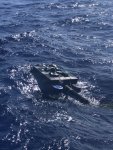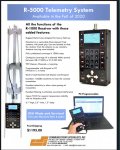Shawnzen
Member
Hi—I have a BCT15x that I am trying to set up for a very specific purpose: omnidirectional scanning of the 216-222mhz range used for animal tracking collars, and no other bands. I've managed to set up custom search of the range, but it just flies through it so fast that it never catches the beeps from the collars, which emit a short beep on one second intervals. IS there a way to slow it down? Also, I've noticed it is scanning up to 4 digits after the decimal and I only need to scan three (not sure how to phrase that properly).
I'm a Mac user, so I am not able to take advantage of the programming software. Any help would be much appreciated and will be happy to share any success stories.
I'm a Mac user, so I am not able to take advantage of the programming software. Any help would be much appreciated and will be happy to share any success stories.




